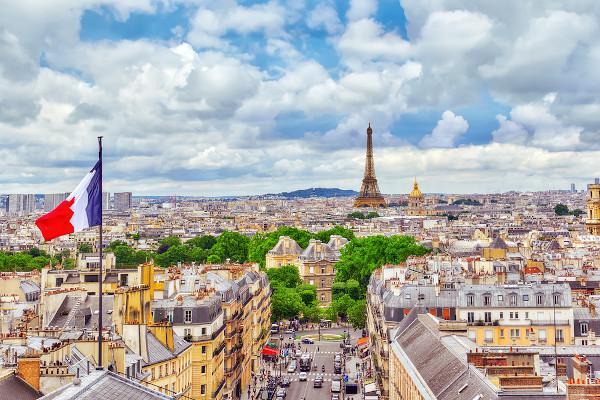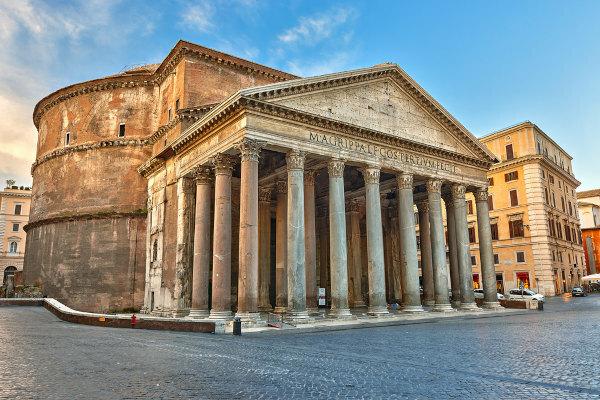A France flag it is one of the most important national symbols of the country. Created in the 18th century, during the French Revolution, and officially adopted in 1794, it is formed by bands in blue, white and red colors, following the same order starting from the mast. The blue and red represent the French capital, Paris, while the white was added to represent royalty.
Read too:Flag of England — the history of the flag that bears the Cross of St George
Topics of this article
- 1 - Summary about the flag of France
- 2 - Meaning of the colors of the flag of France
- 3 - History of the flag of France
- 4 - France
- 5 - Flag of France and other flags
- 6 - Curiosities about the flag of France
Abstract about the flag of France
The flag of France is one of the country's national symbols.
It has three vertical stripes that appear in the following order: blue (next to the mast), white and red. It is, for this reason, called the tricolor flag.
The white color represents royalty and the other two, the city of Paris.
The colors red and blue were initially used in the headdress (bow) used by French officers, which inspired the production of flags. White was later added to the insignia by the Marquis de Lafayette.
The flag of France as we know it today was officially adopted in the year 1794.
Meaning of the colors of the flag of France
the flag of France é formed by three stripes arranged vertically in the following sequence of colors, from left to right: blue, white and red, considered the official colors of the country. In French, the name of these colors is read as "bleu, blanc, rouge", which is also a way of referring to the country's flag.
There is more than one interpretation for the meaning of the different colors on the French flag. The main one, which appears on the official pages of the French government, explains that the white color represents the royalty of the country, whose main representative was King Louis XVI at the time the French insignia was made, who inspired the addition of this color to the national flag. To the blue and red colors, in turn, represent the city of Paris, which is the capital of France.
É the association of the colors of the French flag to the motto Liberty, Equality and Fraternity, created during the French Revolution. Another possible reading indicates that the red color represents the French people, alluding to the blood shed during the conflicts that occurred in the 18th century.
Do not stop now... There's more after the publicity ;)
History of the flag of France
One of the main national symbols of France, the tricolor flag emerged during the period of the French Revolution, triggered by a deep structural crisis that lasted from 1789 to 1799. This event marked the end of the regime absolutist in the country and provoked great transformations in the political system of several countries around the world.
The colors of the flag originate from a headdress that was used mainly by the French national guard and that initially only showed the colors of the capital, blue and red. With the fall of the bastille and King Louis XVI's visit to Paris a few days later, the Marquis de Lafayette presented the monarch with the tricolor version of the insignia, with white representing royalty. From then on, the three-color scheme came to be identified as a symbol of France.
In the year 1790, the National Assembly determined that all French vessels should carry the standard with the three colors, with the red one placed next to the mast. The shape of the French flag as we know it today was determined on February 15, 1794 by the National Convention, which fixed the order of colors as blue next to the mast, white in the center and red at the other end.
Read too: Meaning of the stars of the Brazilian flag
The France
France is a european country located in the Western Europe region. Due to its shape, which resembles a hexagon, it is often called L'Hexagone. In addition to its continental European portion, French territory is made up of several overseas departments that are located in other regions and continents.
The country has a temperate oceanic climate and heterogeneous relief, which can be seen from plains It is depressions to higher areas, which are characterized by the presence of the Alps and the Pyrenees.
Paris is the capital of France, a city that brings together almost 11 million inhabitants out of a total of 65 million people currently living in the country. The city is one of the main tourist destinations in the world, which places France among the most visited nations in the world.
With a highly developed economy centered on the service sector, France is considered an international cultural center. It stands out in very diverse areas, among which we can mention gastronomy, fashion and literature.
Flag of France and other flags
To the three colors used in the flag of France are not exclusive to the country. Although the hue varies, there are other nations that have flags that have white stripes in the center and blue and red bands at the ends.
The most similar to the French flag is that of Netherlands, which is formed by three horizontal bands in the following sequence, from top to bottom: red, white and blue. It was adopted in the 16th century, therefore before the emergence of the French flag. For this reason, so that the French fleets would not be confused with the Dutch, the 1790 determination to the use of the French tricolor flags on vessels established that the banners should be on the vertical.
Among the countries that use flags with a color pattern similar to the French one are: Chile, Luxembourg, Paraguay, Slavic countries like Russia, Croatia It is Slovakia, and many others. Some states, independent territories and former territorial unions had or still have flags that may, at first glance, be confused with French.
Read too: Flag of Argentina — the one with the Sun of May in its center
Curiosities about the flag of France

The French flag is also known as the tricolor flag (from the French “drapeau tricolore”) because of its color scheme.
The colors were in a different order than the current one when they were officially adopted for the composition of the pavilions. The red one was positioned on the left and was next to the mast.
During the Bourbon dynasty's rule over France (1814–1830), the tricolor was replaced by a white flag.
With the proclamation of the Republic in 1848, a group even proposed that the flag of France be entirely red. The population was convinced to keep the tricolor flag by the poet Alphonse de Lamartine, who associated this flag with French strength and the victories and triumphs that the country obtained in battles.
Initially, the color bands were of different sizes, with red being the widest. It was during the government of Napoleon Bonaparte that it was established that the tracks should have the same dimensions.
By Paloma Guitarrara
Geography Teacher
Know the main details of the flag of Spain! Learn the meaning of their colors and the Spanish coat of arms. Also learn the history of this flag.
Click here and understand what the flag of Holland (Netherlands) represents. Learn the meaning of its colors and learn about its history.
Find out what the Canadian flag means. See key facts about the history of the Canadian flag and read fun facts about Canada's ultimate symbol.
Access and learn about the history of the flag of Mexico! Know the meaning of its colors and learn about the symbology of the Mexican coat of arms. See some curiosities.
Learn more about the causes of the French Revolution, the historic event that marked the beginning of the Contemporary Age.
Find out which countries are in Europe. See the list of countries on the European continent and the regions in which they are located. Also find out what the European Union is.
Did you know that the Eiffel Tower was a temporary monument? Click here and read other curiosities about this French symbol. Discover the history of the Eiffel Tower.



